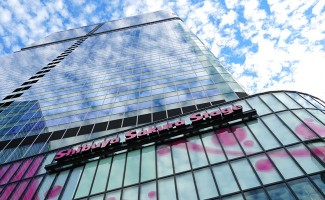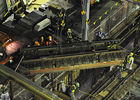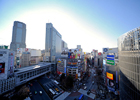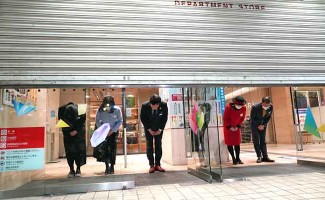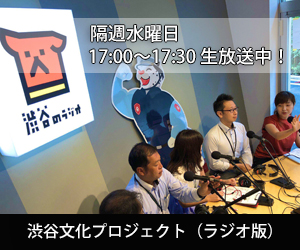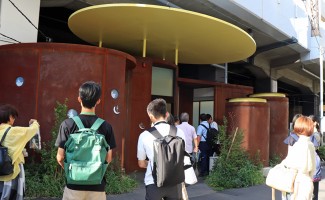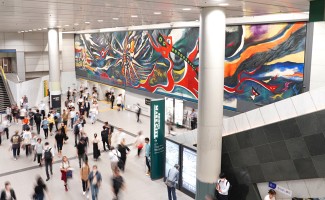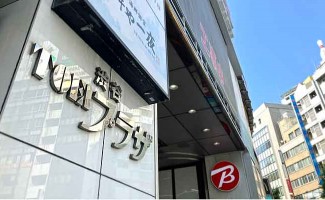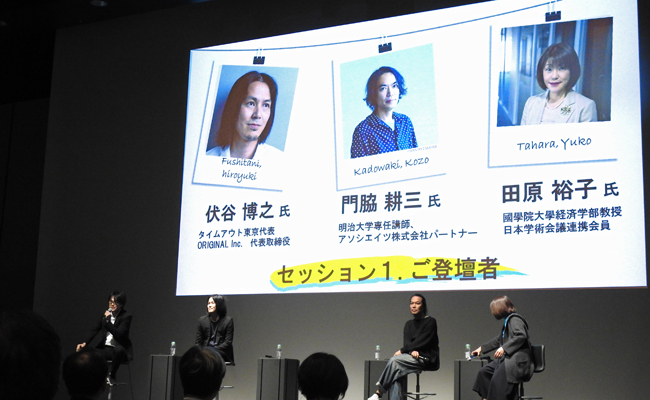
【Report】 Even now is Shibuya "a youth town"?
On September 27, “area management symposium @Shibuya Considering area management from individuality × bearer of the town” (Venue: Shibuya Hikarie Hall A) was held. At the symposium, which features “Shibuya” where various creators and startups are active, the program is organized in a three-part program of opening, session 1 and session 2, and key persons involved with Shibuya in various forms will give talks Expanded. In this report, the critic, Tsunehiro Uno, is the coordinator, along with Hiroyuki Fushitani, representative of "Time Out Tokyo", Professor Yuko Tahara of the Faculty of Economics, Daisuke Kokugakuin, and Kozo Kadowaki, Senior Lecturer, Department of Architecture, Meiji University I would like to introduce in detail the contents of "Session 1" in which a hot discussion was developed under the theme of "Shibuya-like".
80、90年代に「ファションのまち」「サブカルチャーのまち」「若者のまち」として輝きを放った渋谷は、今も変わらず若者から憧れられるまちなのだろうか?
Area management symposium @ Shibuya
〇 Date: Thursday, September 27, 2018 (Thur)
○ Venue: Shibuya Hikarie Hall A
〇 Appearance:
Coordinator / Mr. T. Hiroyuki (critic / editor of PLANETS)
Panelist / Hiroyuki Fushidani (Representative of Timeout Tokyo), Yuko Tahara (Kokugakuin Univ. Professor), Kozo Kadowaki (Architect, full time lecturer at Meiji University)
| 70% of students answered that "Shibuya is uncomfortable"
Uno:Do you still exist in Shibuya when we were called "youth"? I think that the answer is no. Records and movies from around the world gathered, a state-of-the-art culture was born, young people in Japan were longing for Shibuya, about 20 years ago. So now, how do you rediscover "Shibuya-likeness" and extend it?
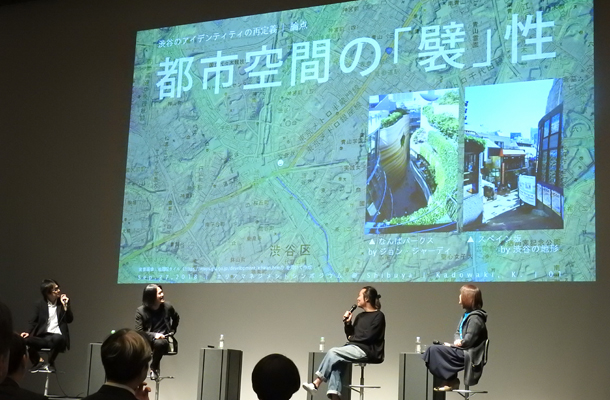 Kadowaki:I think that the feature of Shibuya can be described by the keyword "fold (pidal)". I have been playing in Shibuya since I was in high school, but Shibuya can not go to places I thought. Even though I think that I would like to go out with a girl who went there before going out with a girl, I can not reach it easily. At the time, there is no Google Map, so I will be impatient (laugh). Later, after studying architecture well, thinking carefully, the river runs along a valley, such as "the road is complicated," "it is a valley topography," "various alleys are running," and so on, overall I can see that there is a space of Hindahida in the space. This is a natural terrain made by scraping water, but this way is causing the road to become complicated and it is a factor that causes loss of sense of direction.
Kadowaki:I think that the feature of Shibuya can be described by the keyword "fold (pidal)". I have been playing in Shibuya since I was in high school, but Shibuya can not go to places I thought. Even though I think that I would like to go out with a girl who went there before going out with a girl, I can not reach it easily. At the time, there is no Google Map, so I will be impatient (laugh). Later, after studying architecture well, thinking carefully, the river runs along a valley, such as "the road is complicated," "it is a valley topography," "various alleys are running," and so on, overall I can see that there is a space of Hindahida in the space. This is a natural terrain made by scraping water, but this way is causing the road to become complicated and it is a factor that causes loss of sense of direction.
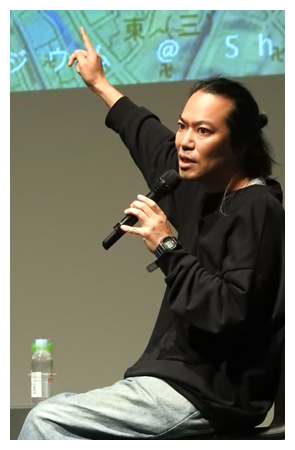 Hida has the effect of "can not see in the future" in urban space, which can be called Shibuya's great strength. John Jaredi of the US · architect, who is the leading expert in shopping mall design, is involved in "Namba Parks" and "Roppongi Hills Shopping Building", but also with Hills, the mall is curved and the destination is I can not see it. Shops will appear at the end of the bend, and you can see various shops by moving yourself, so the migration of the city will increase with nature. Actually Shibuya and Spainzaka also have almost the same spatiality without doing anything, and we are anticipating the design that John Jaredy thought. This is a great advantage. As it is, it is a terrain suitable for the accumulation of various small shops and business operators. It is beneficial to produce shopping and culture.
Hida has the effect of "can not see in the future" in urban space, which can be called Shibuya's great strength. John Jaredi of the US · architect, who is the leading expert in shopping mall design, is involved in "Namba Parks" and "Roppongi Hills Shopping Building", but also with Hills, the mall is curved and the destination is I can not see it. Shops will appear at the end of the bend, and you can see various shops by moving yourself, so the migration of the city will increase with nature. Actually Shibuya and Spainzaka also have almost the same spatiality without doing anything, and we are anticipating the design that John Jaredy thought. This is a great advantage. As it is, it is a terrain suitable for the accumulation of various small shops and business operators. It is beneficial to produce shopping and culture.
On the other hand, as the aging society is progressed from now on, it is inferior from the viewpoint of barrier free. That is why we are considering how we can ski slopes by developing elevators, escalators, etc. in redevelopment. In future Shibuya, I think that it is important to have barrier-free characteristics that are kind to various people, while making full use of space.
Tahara:The most important thing in Shibuya 's redefinition is that there is a nationally disseminated image of "Shibuya = youth town", but "Is even Shibuya really young people' s town yet?" Because, for communication with freshmen and icebreak, when asked "Where are you going to play in Shibuya?", "I do not go to Shibuya almost, I will go to the university and return to the station as it is" There are so many voices. However, since it is not easy to be sensuous, I've been conducting a questionnaire survey for class participants over the past few years, but when asking "How often do you want to use Shibuya?" Two years ago, Even if it is combined, the voice saying "less than a few times a year" is about 30 to 40 percent. I thought that it was "eh", and asked that "Shibuya is comfortable" more straightly, and 70% of the students said that they are "uncomfortable". "People are crowded", "things are high", "there is no place to go" ... .... I wonder if the current young man does not think Shibuya is "my own city".
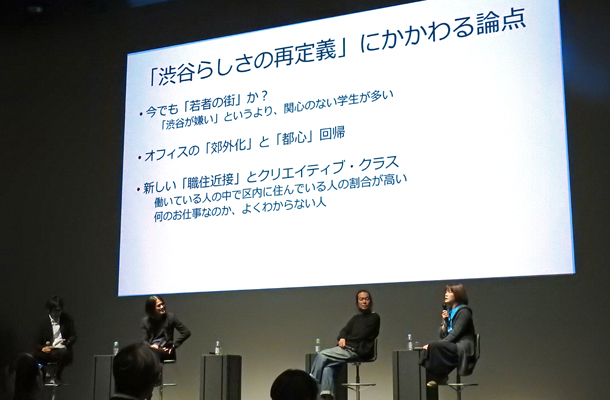 Tahara:If you think with the macro, I often hear that "I came not to Shibuya due to the progress of the net" and "I came to shopping by youth's fashion departure", but in micro-story, when we were students There seems to be no place to be gathered. There are no recent cafes that can stay for hours, or set meals that are cheaper than school meals. Speaking of what is going on, Oychan, the set meal shop that aunt was doing, got out of town, and the number of restaurants in the national chain and the global chain increased. That's why I do not have a place to live, and from a student perspective, Shibuya is becoming a mere big city like the others. Also, recently when reading a book in Creative City, I often think that this is writing about Shibuya. Mr. Richard Florida says "close proximity", but among those working in Shibuya, the proportion of people living in Shibuya is higher than in other areas. People in the creative class like preference for job placement and tend to ask places to work in such places. So I think that "job proximity" will also be a key word.
Tahara:If you think with the macro, I often hear that "I came not to Shibuya due to the progress of the net" and "I came to shopping by youth's fashion departure", but in micro-story, when we were students There seems to be no place to be gathered. There are no recent cafes that can stay for hours, or set meals that are cheaper than school meals. Speaking of what is going on, Oychan, the set meal shop that aunt was doing, got out of town, and the number of restaurants in the national chain and the global chain increased. That's why I do not have a place to live, and from a student perspective, Shibuya is becoming a mere big city like the others. Also, recently when reading a book in Creative City, I often think that this is writing about Shibuya. Mr. Richard Florida says "close proximity", but among those working in Shibuya, the proportion of people living in Shibuya is higher than in other areas. People in the creative class like preference for job placement and tend to ask places to work in such places. So I think that "job proximity" will also be a key word.
| "A middle-aged and elderly city" prisoned by ghosts in the 80s and 90's!
Uno:I would like to think about the point that "Shibuya is a city of young people" that Mr. Tahara raised a problem. I also think that it is different. Speaking clearly, our generation who was a young man in the 1980s and 1990s is "a city that is pressing memories on young people". Japanese pop culture has come out only from the web for 20 years. The power to disseminate culture from the city is already weakening a lot, Shibuya has received it solely. I think that all students at Kokugakuin are talking about "I do not like Shibuya" and that the number of "returning to downtown Tokyo" and "job proximity" has increased in recent creative classes. Former white collar has spread Tokyo west west. It is Ikebukuro, it is Shinjuku, and here Shibuya has been regarded as a node between "working area" and "living area" as a terminal station to transfer to the private railway line. However, contemporary creative classes are working together, close to work and returning more and more to the city center. Once in the west of Tokyo was young, center and east were grandpa, but recently it is gradually reversing. As a result, Shibuya is also "a city of middle-aged and elderly people".
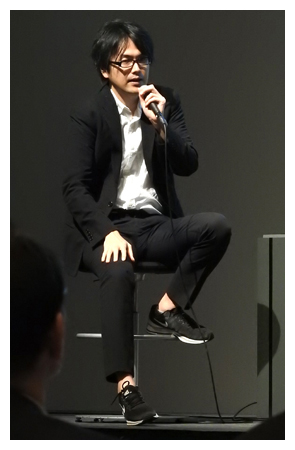 Tahara:There are some parts that I can agree with and some that I can not do. SHIBUYA MARKCITY , which opened in 2000, is targeting women in their 30s and 40s as "Having Shibuya become an adult", this time Hikari also wants to change to the city targeting excessively adults think. In that sense, I wonder if the young people feel that they can not feel where they are, or that they can not become the leading role. Another thing is that if you look at the age-class young people who wants to live, "Shibuya" is very popular among women. In the sense that young ladies live in town, I do not think that I can not say anything else I can not attract young people.
Tahara:There are some parts that I can agree with and some that I can not do. SHIBUYA MARKCITY , which opened in 2000, is targeting women in their 30s and 40s as "Having Shibuya become an adult", this time Hikari also wants to change to the city targeting excessively adults think. In that sense, I wonder if the young people feel that they can not feel where they are, or that they can not become the leading role. Another thing is that if you look at the age-class young people who wants to live, "Shibuya" is very popular among women. In the sense that young ladies live in town, I do not think that I can not say anything else I can not attract young people.
Uno:You can no longer say "to talk about youth fashion" by traditional methods. I taught at the university and I give students the generation of your father, mother, and when we were students, "to find something good sense, to wear it and possess it is an intellectual culture When we tell you that there is a time when it was a proof of identity, students are shocked. Self-realization by consuming goods is now very cool thing. It is often said "from mono consumption to consumption consumption". I think that the former commercial facility has come with the fundamental idea of buying things and possessing objects, people going out into town, making it a public space. I think Shibuya is the result that it ceases to pass. If we do not change games, probably we think that we will live forever and remain captive by ghosts of the '80s and' 90s.
Shibuya in the 1990s was "the city of subculture of young people", but then what is Shibuya in 2010 and 20's? For example, I can be a young active lifestyle city. I think that it is necessary to redefine Shibuya's town in such a way.
Kadowaki:Rather than redefining, I think that it is better as a strategy that new ones are overwritten, and both separate layers are over.
Fushidani:Well, Shibuya is "the city of diversity." I am doing the theme "Let's send attractive Japanese things to the world" by time-out, but Japanese charm is "diversity culture" from overseas. But diversity is very hard to convey. Because 'diversity'. There used to be various epidemics such as "Gal culture", "Ganglo" and "Shibuya system" in Shibuya, but there is not much information dissemination in such a form anymore. As people with diverse thoughts challenge in various places, I feel that there are circumstances where individuals are less noticeable.
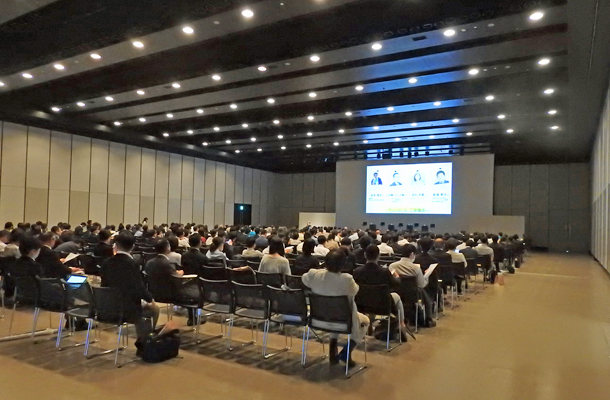
| Shibuya 's house is different from Tawaman in Tokyo' s three wards.
Uno:I always want Shibuya to be "active town". The scale of the town, geographical condition also. I think that as soon as becoming an old subculture theme park with 'body in Japan (Shibuya) that was amazing', it seems to become like 'Petit Asakusa'. It is unfortunate for Shibuya. It is said that creative classes "work close proximity" and "city center return" are advancing, but speaking about whether you can live near Omaru you, it is quite difficult. I think that Shibuya is relatively easy to live compared to it. Considering the radius of about 3, 5 kilometers from the station in front of the "Shibuya area", I think that it is good to be born into the residential area of the creative class. If the railway along the private railroad after the war is a white-collared dad, a housewife's mother of a full-time housewife buying a selling-houses of 2 × 4, ... If it is Crayon Shin-chan's "happy stationery", the future "Shibuya area" I hope to have a scenario of realizing the creative class lifestyle ......
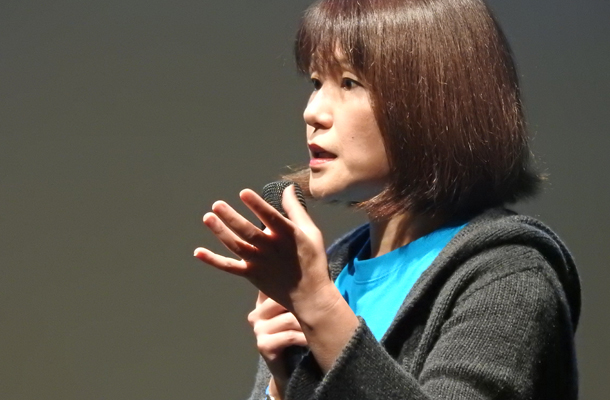 Tahara:Talking about "living", in the three central wards of Tokyo (Chiyoda-ku, Chuo-ku, Minato-ku), the town apartment and so on are steadily growing and the population is increasing rapidly. But, in the case of Shibuya, there are different housing resources. If you really go by bus for 5 minutes and go 10 minutes, for example going to the direction of Fukigaya, there are many places like Showa in Waka Shibuya. If so, Shibuya 's charm is that there are a shoshu' s mansion, apartment, mosaic like various housing stocks. There are not many houses where young people can live but there is a different interest from Tawaman in the three central wards of Tokyo.
Tahara:Talking about "living", in the three central wards of Tokyo (Chiyoda-ku, Chuo-ku, Minato-ku), the town apartment and so on are steadily growing and the population is increasing rapidly. But, in the case of Shibuya, there are different housing resources. If you really go by bus for 5 minutes and go 10 minutes, for example going to the direction of Fukigaya, there are many places like Showa in Waka Shibuya. If so, Shibuya 's charm is that there are a shoshu' s mansion, apartment, mosaic like various housing stocks. There are not many houses where young people can live but there is a different interest from Tawaman in the three central wards of Tokyo.
Kadowaki:Although it is another point, although diversity is called "diversity", what is important when thinking about town planning in Shibuya is "Mixture". Diversity is a feeling that various entities are participating in the platform, but I think that mixtures are jerky. Shibuya, where you can not overlook the top with terrain above the folds, is a city that is easy to guarantee a jogging feeling. I think that is a strength not found in Daimaru.
Uno:In the story of Mr. Kadowaki, there was a story that "Shibuya is a town of Hida", there is a place to stay, there is a private shop, local space as the structure of the city is likely to occur. In other words, when we are going to modernize big cities and downtown areas in Japan, it's only a matter of being "midtowned" everywhere, only going to "Daimaru Akari" anywhere is not the correct answer. I think that it is important to keep in mind how to make town planning while leaving "Shibuya nature" in Shibuya.
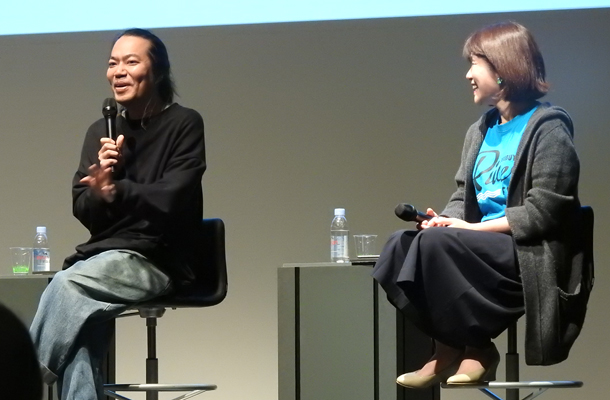 Kadowaki:Daikanyama was shining in the 90's, is not it? However, it will lose its charm from when. It is due to the large-scale redevelopment in front of the station, I think that there was that culture and the culture went well. This is a huge feature of the city in Japan, mostly when small stores gather together and are culturally disseminated, the land price rises, redevelopment has occurred, the rent has risen, the people who have been there until now Is moving to the surroundings. This is repeated many times, there is Shibuya, there is Harajuku, there is Daikanyama, I want to have Nakameguro ... .... However, Shibuya is not influenced by the planned redevelopment, or keeps a structure that a small shop puts as it is, I think that it is very interesting, but that depends on the characteristics of "Hida space" I think that it is thing.
Kadowaki:Daikanyama was shining in the 90's, is not it? However, it will lose its charm from when. It is due to the large-scale redevelopment in front of the station, I think that there was that culture and the culture went well. This is a huge feature of the city in Japan, mostly when small stores gather together and are culturally disseminated, the land price rises, redevelopment has occurred, the rent has risen, the people who have been there until now Is moving to the surroundings. This is repeated many times, there is Shibuya, there is Harajuku, there is Daikanyama, I want to have Nakameguro ... .... However, Shibuya is not influenced by the planned redevelopment, or keeps a structure that a small shop puts as it is, I think that it is very interesting, but that depends on the characteristics of "Hida space" I think that it is thing.
On the other hand, "Hida space" is not barrier free. "It's not about buying things" To realize a reasonable lifestyle of creative classes, this terrain is very annoying and disgusting. Currently ongoing redevelopment in front of the station is to overcome this valley topography. If completed, a reasonable life will be realized.
From monochrome to consuming consumption - the escape from 'preregister pop' is the key
Uno:Town development that thinks mainly about shopping and consumption behavior is just losing. Unlike in the past, it is smart to not shop, people with intelligent, cultural and high antennae are already changing. The only thing people want from shopping is the overwhelming number of items and ease of handling. When saying that, Shibuya definitely does not enemy at Isetan in Shinjuku and Viclo East Exit. So, Shibuya must fight in "Koto". Not "shopping" or "shopping" but "working" or "living". I think that there is an argument in how to use Shibuya's fold-like topography and cultural accumulation.
Fushidani:It is extremely attractive to have various streets, such as pits. Foreign tourists visiting Tokyo also like Naka-Meguro because it's fun walking, old and new, alternating casual styles and old buildings come out alternately. Shibuya is certainly interesting because there are many such streets, but it is quite wide and it is hard to walk, so I wish I could design streets and cityscapes a bit easier to walk around.
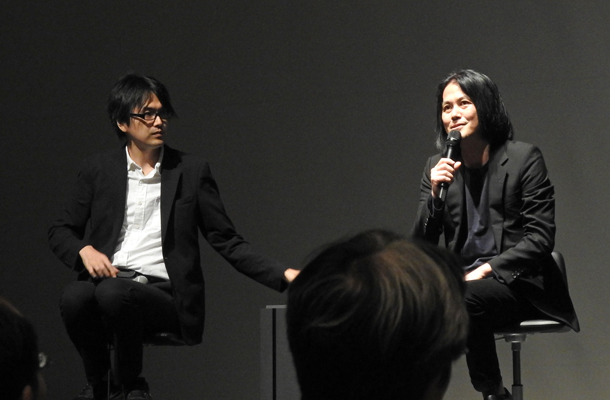 Uno:Especially it is too concentrated on the north side. I hate the most in the world to go to the north side of Shibuya station on holiday. Because, as soon as you get in and out of Shibuya, you should use the south area more. Such a fundamental thing is not surprisingly done.
Uno:Especially it is too concentrated on the north side. I hate the most in the world to go to the north side of Shibuya station on holiday. Because, as soon as you get in and out of Shibuya, you should use the south area more. Such a fundamental thing is not surprisingly done.
Kadowaki:"Shibuya Stream" is made in the south side by redevelopment, I think that it will be gradually dispersed in the future. However, because the capacity of Main Street does not match the number of pedestrians, it is certainly difficult to walk.
Fushidani:But that is why the Shibuya scramble intersection is a rave criticism in the world that there are tricks that can pass by that number of people (laugh)
Uno:Not only in Shibuya, I think that cities in Japan are "the era of the station building". The power of the street is falling, people demand only convenience and cost performance for consumption. "Station building" is the optimal solution, is not it? It is now that "the city is dead" because you have overdoed the optimal solution. As long as there is an idea of "bringing people to town with shopping," the era of the station building will continue.
Fushidani:Although I do not know whether this example is good, when making a CD sales office in the former Tawareko, the store manager thinks about the migration of the customer looking at the whole floor, but each purchasing person sells their goods Because I want to have items in the place where people gather most, or where they come and go, I will set up pops. That's why pops are lined up just in front of entrance and cash register. As a result, customers will not go to the back of the floor, no matter how much sales are sold before checkout, the sales of the whole store will not rise. It is very poor efficiency. So, when you look at the redevelopment in the center front of the station, you feel that it will overlap with the lined pops before the shop front. "This is the only place where you can only have a shop here, you owe me such a large sales floor for what," I remember the times I remembered (laugh).
Uno:Well, as I sell things in my opinion, there is no other choice but to put a pop before the cashier and building a station building in front of the station. On the other hand, sales of CDs are falling, but sales of handshake meetings are growing infinitely. So, if we do not change games to find people 's value rather than things like experiences or things, so we can not escape from the "pop building before the station building". Considering from the viewpoint of "approaching work placement," there is a workplace in Shibuya, even if there is a house a few kilometers away, you can walk well. I think that it is useless unless you have to stand on the idea that "This road is fun, so I like this town."
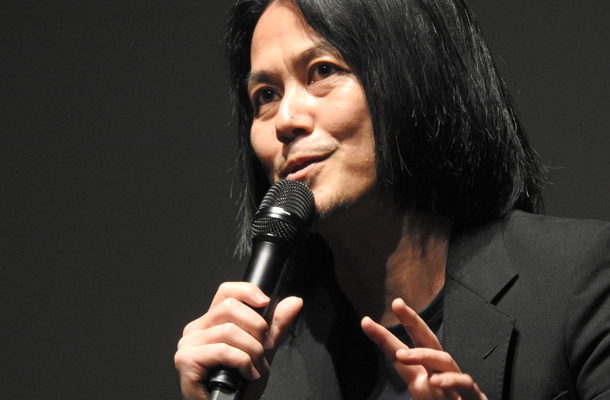 Fushidani:The timeout is based in London, but even if you are walking in the city of London, the cityscape is attractive. It is often said that Hasebe, the mayor of the city, is "London, Paris, New York, Shibuya ku", but actually when I walked around the city of London, the central central was completely "touristic". People living in London have no sense of going to the central on holidays. However, when going to the surroundings, it is crowded with new craft shops, bakeries under the elevated ... ... and it is crowded with a lot. Many of the cities in the world are progressing towards tourism and donuts in the middle.
Fushidani:The timeout is based in London, but even if you are walking in the city of London, the cityscape is attractive. It is often said that Hasebe, the mayor of the city, is "London, Paris, New York, Shibuya ku", but actually when I walked around the city of London, the central central was completely "touristic". People living in London have no sense of going to the central on holidays. However, when going to the surroundings, it is crowded with new craft shops, bakeries under the elevated ... ... and it is crowded with a lot. Many of the cities in the world are progressing towards tourism and donuts in the middle.
| Shibuya is changed to "City of occupying proximity" where you can become the leading character!
Uno:We tend to forget the argument "How do you face Shibuya in the tourist area?" But truly, if you think from a foreigner when thinking worldwide, Shibuya is a tourist destination completely. It is not a city that only people live in. Let's take the scramble intersection and Hachiko Plaza to foreigners. So I think that we may not have to be in front of the station, but have the value of changing the surrounding "Shibuya area" to a town near work and residence. If you can create a story that you can walk to Shibuya Hikarie or a stream, it will change at once.
Tahara:Some people actually come to Pew and Shibuya by bicycle from around Sendagaya.
Kadowaki:That life is only yet to be branded. It seems that it will change very much when the image is transmitted.
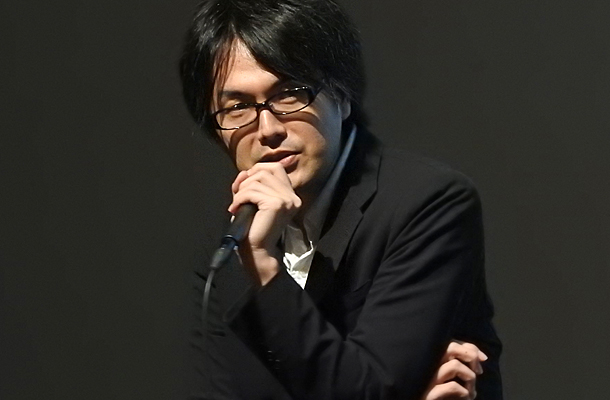 Uno:If you live in a landfill Tawaman and work with Daimaru yu is the strongest, there are certainly people who think that it is too bad if it is that. I think that such a layer should live in Shibuya.
Uno:If you live in a landfill Tawaman and work with Daimaru yu is the strongest, there are certainly people who think that it is too bad if it is that. I think that such a layer should live in Shibuya.
Kadowaki:I was talking about this and I became wanting to live in Shibuya (laugh).
Uno:Is it "life to live back and forth between shopping malls and station buildings" is a rich creative class life? If Shibuya could lead the answer, I think it is very nice.
Fushidani:Speaking of whether young children are hanging around Shibuya or playing in the real sense, I do not think so. Our office is now in Hiroo, but as the space became lighter, we were talking to the young editors of the other day, "Where shall we go next?" I naturally had Shibuya so I thought that I would like to move in Shibuya. However, no matter how long they wait, the name Shibuya does not come out at all, Ueno and Tokyo, Ikebukuro and others come up. I feel that our times and the way the young people of today are looking at Tokyo is clearly different.
Uno:In the 80's and 90's, when we talked about shopping so much that we were shopping so much, it was because we became the "leading role" only at that moment. When that power becomes relatively weak, I think that the first moment that I can become the leading role is "to live" and "to work". As for how to make that model centering around the town called Shibuya, now that variation is still small. If Shibuya can become its role model in Tokyo, I think that it will lead to reaching young people who are away now.
Tahara:I think that it is very important for young people to become the leading role. What will be expected as a person responsible for town planning by living and working will be the reason for you to like Shibuya.

Editorial department · Fuji Itakashi
Shibuya registrar. In addition to Shibuya of Culture information, seasonal news and topics, it will spell write that feel every day.



